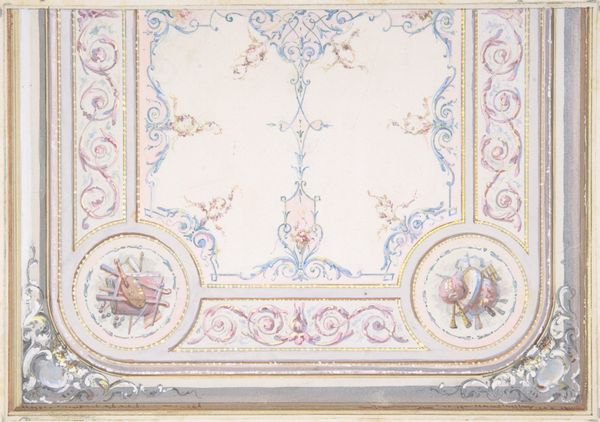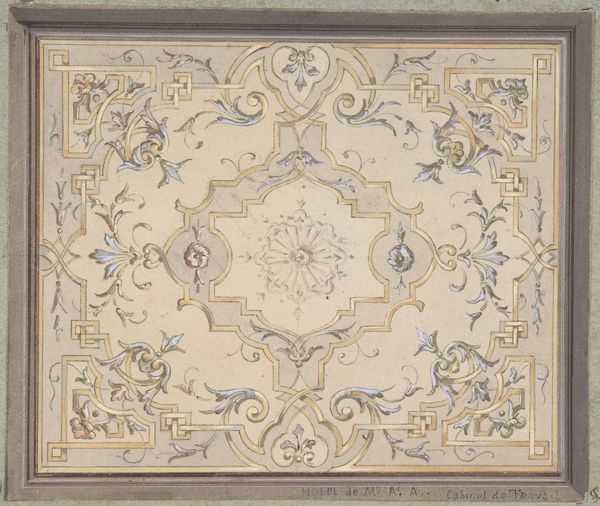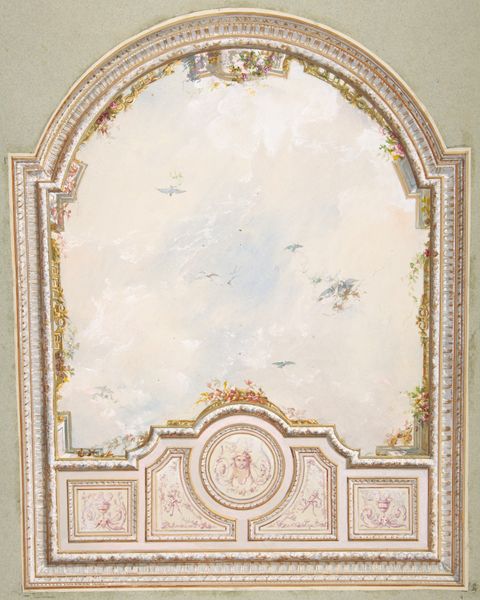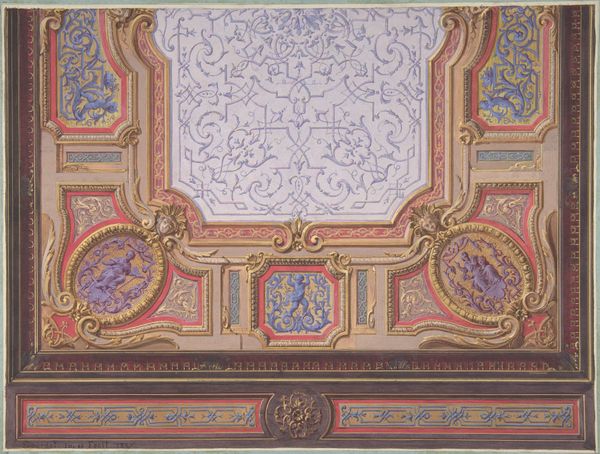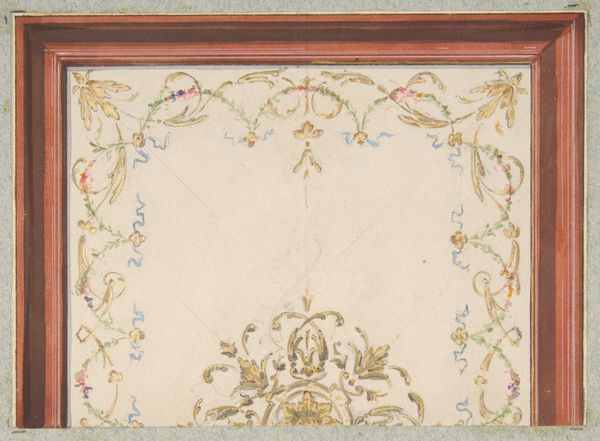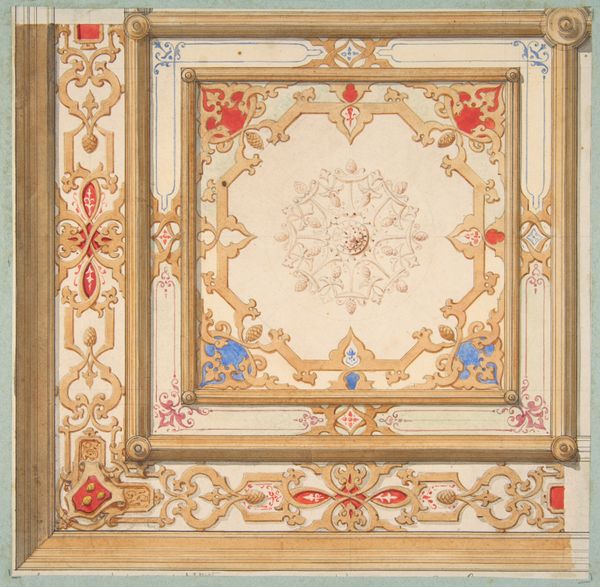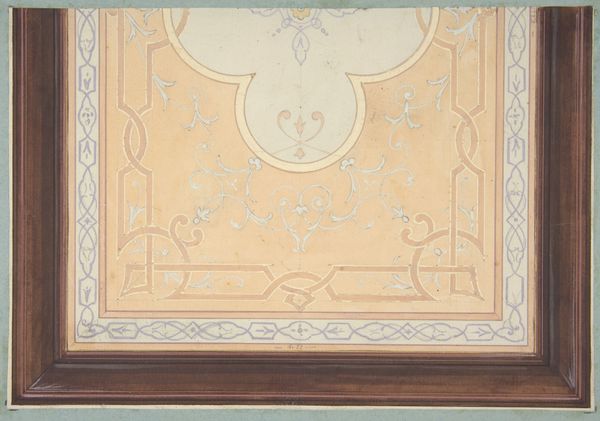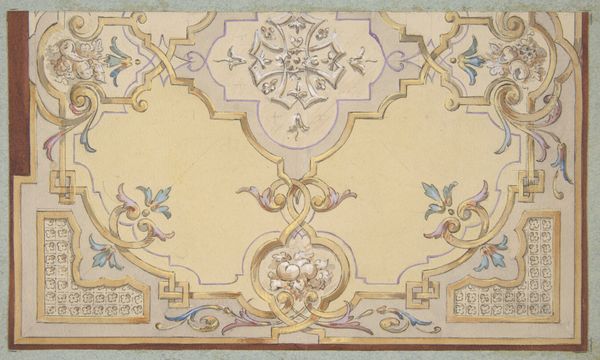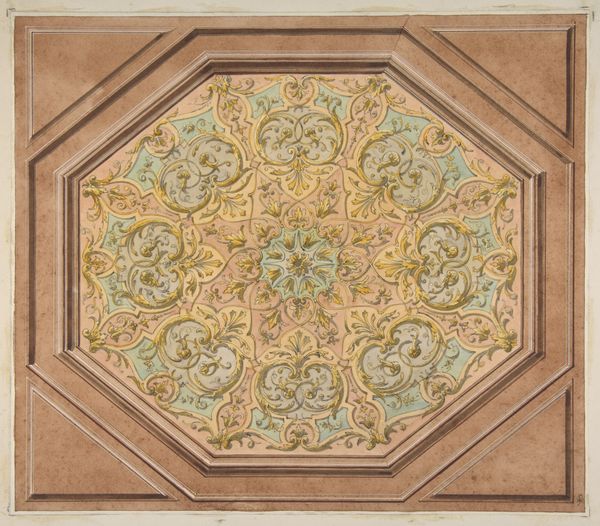
Design for the painted decoration of a ceiling with a trompe l'oeil canopy and roses 1830 - 1897
0:00
0:00
Dimensions: Overall: 10 5/8 x 14 15/16 in. (27 x 38 cm) image: 6 5/8 x 9 15/16 in. (16.9 x 25.2 cm)
Copyright: Public Domain
Curator: Jules-Edmond-Charles Lachaise designed this intriguing drawing with watercolor, showcasing a decorative ceiling with trompe-l'oeil effects. It was created sometime between 1830 and 1897, and you can now find it at the Metropolitan Museum of Art. Editor: What immediately strikes me is how airily this artwork presents itself; there's a playful softness with its composition that is hard to ignore. A bit of Rococo Revival here perhaps? Curator: Most definitely, Rococo's lightness certainly speaks here. Note how Lachaise uses trompe-l'oeil, creating an illusion of depth where there is none, mimicking an open canopy overhead with skies and foliage. The central rose motif, as you may also notice, lends a certain psychological grounding, evoking feelings of beauty. This sort of artwork really taps into our cultural memory surrounding idealized domestic spaces. Editor: Indeed. The linear perspective in particular draws my eye to that floral medallion. Its strategic placement offers a compelling focal point around which everything orients. Note too how the pastel hues function as an element to soften the structure and angularity typical in architecture. I see semiotics working to support that symbolism you flagged. Curator: Consider further how this design reflects 19th-century domestic ideals, turning interiors into microcosms of beauty and prosperity. Each motif and architectural trick used here carries an intent – it offers more than mere decoration, it presents a kind of visual poetry celebrating beauty's impact on the spaces we occupy. Editor: This all provides a useful analysis—however, let's not neglect to recognize how the work utilizes shadow and contrast, giving depth to the rose centerpiece as well as to the architectural framing within which it resides. These darker lines against paler tones really animate this work. Curator: Absolutely. This piece invites a deep exploration of aesthetic values during a rapidly changing era in history. By drawing upon both symbolic depth and innovative perspectives, we can understand how artworks connect profoundly to human perception. Editor: Yes, indeed, seeing how structure, palette, and trompe l'oeil converge is rather informative as well.
Comments
No comments
Be the first to comment and join the conversation on the ultimate creative platform.

